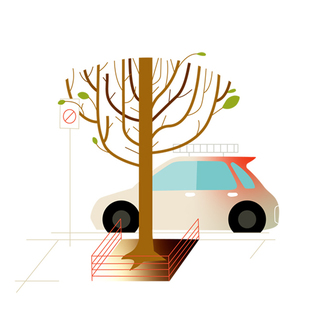
Alex Eben Meyer
The cold stare of satellites revealed something unusual: In some parks, trees were unfurling their leaves later in the year. The glowing green of springtime was delayed.
At first, the opposite was true. Reviewing satellite data that covered 379 of New York City’s parks between 2000 and 2022, a team of researchers, including postdoc Juwon Kong and Frederick C. Hixon Professor of Geography and Urbanization Science Karen Seto from the Yale School of the Environment, discovered that leaves were budding earlier in the season. This occurred across the city and was consistent with predictions. Winters were warmer; spring was warmer; the trees adjusted their internal clocks.
But then, starting in about 2010, this trend reversed in some places: Trees began to release their leaves later in the season. “We don’t fully understand why this change happened,” Seto says, but it’s tied to a feature of tree physiology known as chilling accumulation. Deciduous trees in temperate regions depend on a certain depth of coldness during the winter to trigger their emergence from dormancy. After cooling, they are ready to spread leaves in the warmth.
The warmer winters of climate change are disrupting this process; trees are not getting cold enough. The effects are especially pronounced in midsize urban parks, where warmth penetrates from the edges further into the interior. (Larger parks can maintain cooler interiors.)
This change, Seto points out, creates a challenge for planners and green-space managers focused on climate mitigation and adaptation. “Cities have historically been thinking about tree species that can withstand higher temperatures,” she says, given projections of a warming climate over the next several decades. “But now you have to think not only about summer temperatures that are hotter, but also winters that are warmer, and these are slightly different effects.”
The findings hold particular significance given the many services that parks provide: recreational space, the cleansing of air, intake of carbon dioxide, and local cooling, to list a few. All of these benefits will shrink if summer foliage fills a shorter window.
Making intelligent decisions for the future, Seto and Kong emphasize, requires information collected over long periods of time. “This kind of research was only made possible with very long records from NASA satellite data,” Seto says. “And there’s been a massive budget cut at NASA.” Such cuts, she went on, are not just numbers in the abstract. Eighty percent of the US population lives in cities, a figure consistent in high-income countries across the world. To the extent that we lose satellite data, the future of urban parks grows more uncertain.
 loading
loading